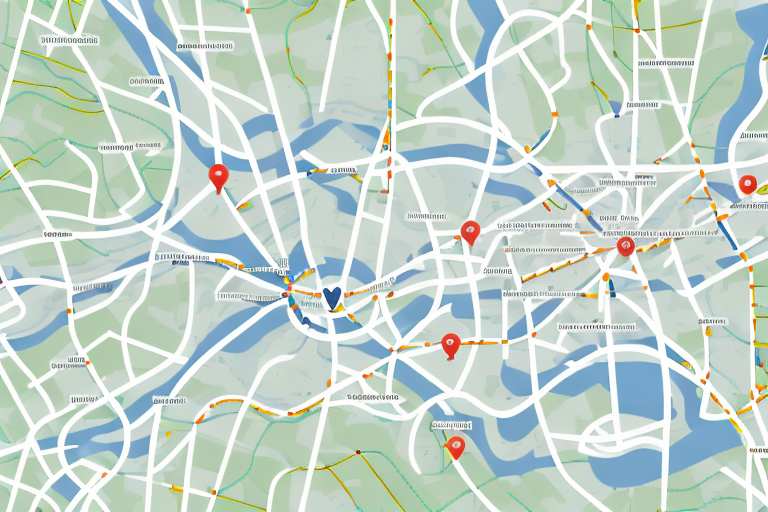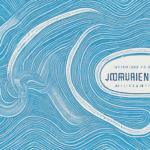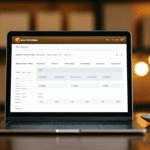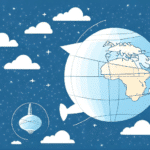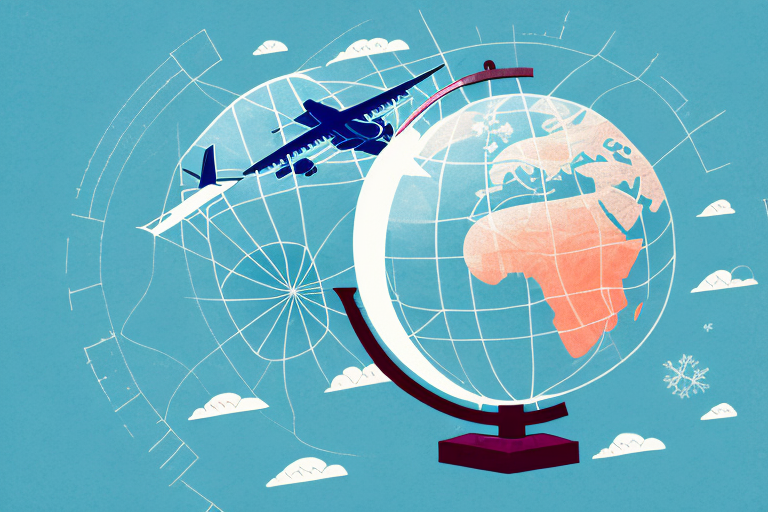Introduction to Time-Based Route Planning
Traveling can be one of the most rewarding experiences of your life. However, getting from point A to point B can be time-consuming and stressful if you don't plan your route effectively. Building routes based on time efficiency can save you valuable hours and ensure you get the most out of your trip. In this article, we'll guide you through the process of building efficient routes and highlight the best tools to make your planning easier.
The Importance of Time Management in Travel Planning
Effective time management is crucial in travel planning as it directly impacts the quality of your travel experience. An optimized route ensures that you spend more time exploring your destination and less time navigating through traffic or waiting for transportation.
Maximizing Travel Experience
By planning your route efficiently, you can visit more attractions, attend scheduled events, and engage in activities without feeling rushed. This balance between travel and exploration can significantly enhance your overall experience.
Cost Efficiency
Proper time management can also lead to cost savings. Booking activities and accommodations in advance often secures better deals and avoids last-minute price hikes. Additionally, a well-planned itinerary can reduce unnecessary expenses, such as extra transportation costs or missed reservations.
Calculating Travel Time and Distance Effectively
Accurately calculating travel time and distance is the foundation of building an efficient route. Utilizing reliable tools and considering various factors can help you create a realistic and practical itinerary.
Using Mapping Tools
Tools like Google Maps and MapQuest allow you to input your starting and ending points to receive detailed route information, including distance and estimated travel time. These platforms also offer different transportation modes, such as driving, walking, biking, and public transit.
Considering Traffic and Weather Conditions
Travel time can vary based on the time of day, traffic conditions, and weather. It's advisable to check real-time traffic updates and weather forecasts to adjust your plans accordingly. Apps like Waze provide real-time traffic information and can suggest alternative routes to avoid delays.
Incorporating Buffer Time
Unexpected events, such as road closures or accidents, can disrupt your schedule. Including buffer time in your itinerary helps accommodate unforeseen delays, ensuring you stay on track without feeling stressed.
Essential Tools and Resources for Time-Based Route Planning
Leveraging the right tools and resources can streamline the process of planning your travel route, making it more efficient and less time-consuming.
Route Optimization Software
- Route4Me: This tool allows you to customize your travel routes based on criteria like time, distance, and specific stops. It’s ideal for complex itineraries involving multiple destinations.
- TripIt: TripIt organizes your travel plans in one place, providing a comprehensive itinerary that includes flights, accommodations, and activities.
Real-Time Navigation Apps
- Waze: Offers real-time traffic updates and suggests the fastest routes based on current conditions.
- Google Maps: Provides detailed maps, real-time traffic information, and transit schedules.
Eco-Friendly Planning
Ecopassenger is a valuable resource for comparing the carbon footprints of different transportation modes, helping you make environmentally conscious travel choices.
Benefits of Time-Efficient Route Planning
Planning your route based on time efficiency offers numerous advantages that enhance your travel experience.
Enhanced Travel Experience
Optimized routes allow you to explore more destinations without feeling overwhelmed or exhausted. This balance ensures you enjoy each location to the fullest.
Cost Savings
Efficient route planning can lead to significant cost savings by reducing fuel consumption, minimizing transportation expenses, and avoiding last-minute bookings that often come with higher prices.
Stress Reduction
A well-structured itinerary reduces the stress associated with travel planning, providing a clear roadmap for your journey and eliminating the uncertainty of spontaneous decisions.
Prioritizing Destinations and Managing Your Itinerary
Prioritizing destinations based on time constraints ensures that you visit the most important attractions without compromising on your overall travel experience.
Identifying Must-See Attractions
List out the top attractions you wish to visit and allocate time slots based on their importance and opening hours. This prioritization helps in creating a focused and achievable itinerary.
Seasonal and Event-Based Planning
Consider the season and local events when planning your route. Visiting attractions during off-peak seasons or attending local festivals can enhance your experience and provide unique opportunities.
Choosing the Most Efficient Modes of Transportation
Selecting the right mode of transportation is critical for maximizing time efficiency during your travels.
Assessing Transportation Options
- Trains: Ideal for intercity travel, offering comfort and scenic views.
- Flights: Best for long-distance travel, significantly reducing travel time.
- Public Transit: Efficient within cities, reducing the need for car rentals.
- Walking and Biking: Perfect for short distances, promoting health and sustainability.
Real-Time Updates and Flexibility
Utilize apps that provide real-time updates on transportation schedules and delays. This flexibility allows you to adjust your plans on the go, ensuring a smooth travel experience.
Avoiding Common Mistakes in Time-Constrained Route Planning
Even with the best planning, certain pitfalls can hinder your travel efficiency. Being aware of these common mistakes can help you navigate them effectively.
Overpacking Your Itinerary
Attempting to visit too many places can lead to fatigue and reduced enjoyment. Focus on quality over quantity to ensure a memorable experience.
Ignoring Local Insights
Local knowledge can provide valuable insights into the best times to visit attractions, hidden gems, and efficient travel routes. Engage with local communities or consult reputable travel guides for informed planning.
Failing to Adapt to Changes
Unexpected events can disrupt your plans. Maintain flexibility in your itinerary to accommodate changes without significant stress.
Future Trends in Travel Planning: Predictive Analytics and Machine Learning
Advancements in technology are transforming travel planning, making it more personalized and efficient through predictive analytics and machine learning.
Predictive Analytics
Predictive analytics can forecast travel trends, peak times, and potential disruptions, enabling travelers to make informed decisions and optimize their routes proactively.
Machine Learning Applications
Machine learning algorithms analyze vast amounts of data to recommend personalized routes, suggest activities based on preferences, and enhance the overall travel experience.
Staying abreast of these technological advancements can provide a competitive edge in planning more effective and enjoyable travel itineraries.
Conclusion
Building routes based on time efficiency is an essential strategy that can transform your travel experiences. By managing your time effectively, utilizing the right tools, and avoiding common pitfalls, you can maximize your travel enjoyment while minimizing stress and costs. Embracing technological advancements further enhances your ability to plan optimized routes, ensuring your journeys are both memorable and efficient.















